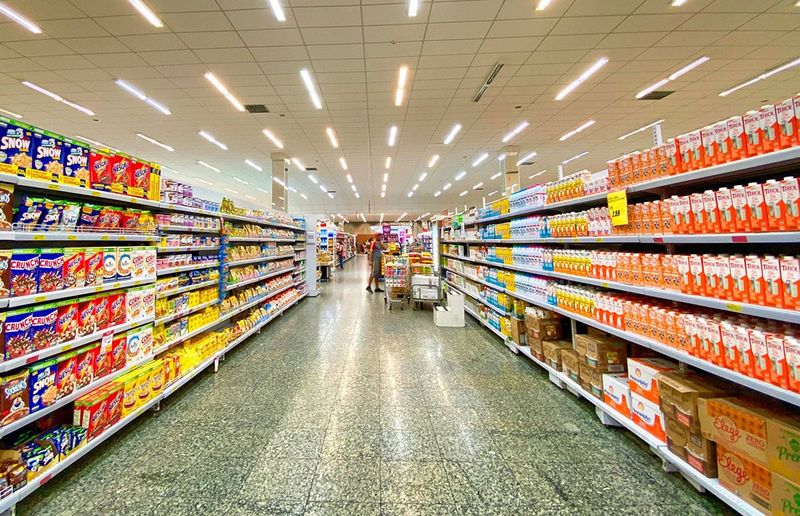Retail media has evolved into a significant component of digital marketing in recent years. Below, we attempt to provide an overview of the topic.
What is Retail Media?
Digital retail media refers to the placement of advertising on platforms such as Amazon, Walmart, eBay, Zalando, AboutYou, and retailer websites such as Otto, Media Markt, Walmart, or Target to promote products and brands directly at the point of sale.
Retail media is often divided into the following groups:
- On-site Advertising: Digital advertising on the website or app
- Off-site Advertising: Digital advertising on social media, TV
- In-store Advertising: Advertising within a store, e.g., on displays
Here, we primarily focus on the on-site area.
This form of performance marketing utilizes the reach and first-party data of retailers or platforms to target advertising and reach customers during the purchase decision phase.
An essential feature of retail media is the close integration of advertising and e-commerce. By integrating ad placements directly into online shops and apps, brands can showcase their products exactly where purchase decisions are made. This proximity to the point of sale increases the likelihood of conversion and enables precise measurement of success through integrated reporting systems.
The growing importance of retail media is also reflected in revenue figures: According to a study by eMarketer, global retail media advertising spending is expected to reach $140 billion in 2024, with approximately 20% invested online. Amazon particularly benefits from this, as approximately 74% of online retail media ad spend is estimated to occur on Amazon, according to eMarketer.
Moreover, according to eMarketer, this advertising format is growing at nearly 22%, the strongest growth rate compared to other advertising formats. This trend underscores the significant potential of this advertising format for brands, platforms, and retailers alike.
Advantages of Retail Media
Below, we will examine the key advantages of retail media and demonstrate how companies can benefit from this approach.
Proximity to the Point of Purchase
A significant advantage of retail media is its immediate proximity to the point of purchase (PoP). Unlike other advertising formats, which are often temporally and spatially separated from the actual purchase process, retail media allows for direct engagement with customers in the crucial phase of the purchase decision process. By integrating advertising into e-commerce platforms themselves, such as sponsored products or display ads, brands can present their products precisely when potential buyers are actively seeking solutions and demonstrating a high propensity to purchase.
The proximity to the PoP enables advertisers to target their messages directly to customers who have already shown an interest in a particular product category or specific product. By utilizing keyword targeting and category targeting, brands can ensure their ads appear in a highly relevant context, thereby achieving greater attention and interaction. This contextual relevance not only increases the likelihood of conversion but also contributes to a positive customer experience, as the advertising is perceived as helpful and supportive.
Another aspect of proximity to the PoP is the ability to address customers in real-time and tailor to their individual needs. By analyzing current browsing and search behavior, retail media platforms can dynamically serve personalized ads tailored to the specific interests and preferences of each customer. This personalization increases the relevance of the advertising and enhances the likelihood of conversion. Furthermore, the proximity to the PoP allows for quick adaptation of advertising strategies based on real-time data to respond to changes in customer behavior and optimize campaign effectiveness.
By effectively leveraging these advantages, brands can increase their visibility at the PoP, boost the likelihood of purchase, and ultimately maximize their revenue on e-commerce platforms.
Integrated Measurement of Success
A significant advantage of retail media is the ability to precisely measure the success of advertising campaigns using integrated reporting systems. These systems utilize the direct connection between advertising and purchasing behavior on the platform to analyze the impact of ads on revenue. By integrating advertising and sales data, advertisers can accurately track which ads led to a purchase and thus calculate the return on advertising spend (RoAS) precisely.
This, in turn, enables companies to optimize their advertising expenditure and continuously improve the effectiveness of their campaigns. Moreover, through the use of "closed-loop" measurement, insights into the purchasing behavior of the target audience can also be gained, such as identifying cross-selling opportunities or determining the customer lifetime value (CLV).
Another advantage of the systems provided by platforms/retailers is the ability to examine the impact of retail media campaigns on brand awareness and brand perception. By analyzing detail page views, companies can determine how strongly their brand is perceived in the purchase decision process. These insights help optimize the brand strategy and increase product visibility on the platform.
Forms of Retail Media Advertising
Retail media offers advertisers a variety of opportunities to promote their products directly on e-commerce platforms, thus being closer to the customers' purchasing decision process. Below, the most common advertising formats used in the field of retail media are introduced, allowing brands to effectively target and activate their audiences.
Sponsored Products
Sponsored Products are one of the most popular advertising formats in retail media. These are paid ads that appear directly in the search results or product listings of e-commerce platforms. These ads visually resemble organic search results but are marked with a label like "Ad" or "Sponsored". Sponsored Products enable advertisers to prominently place their products, thus increasing visibility and sales.
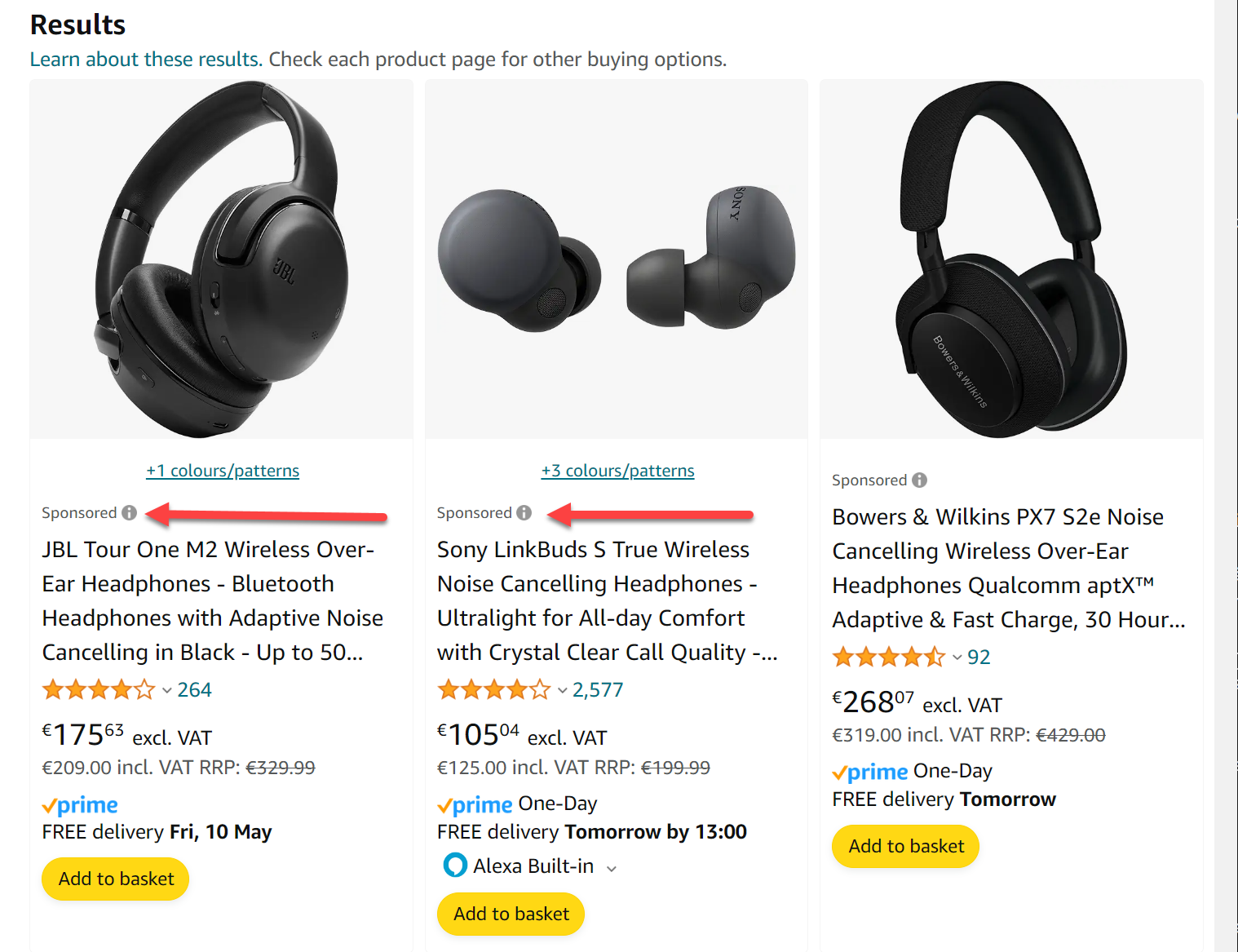
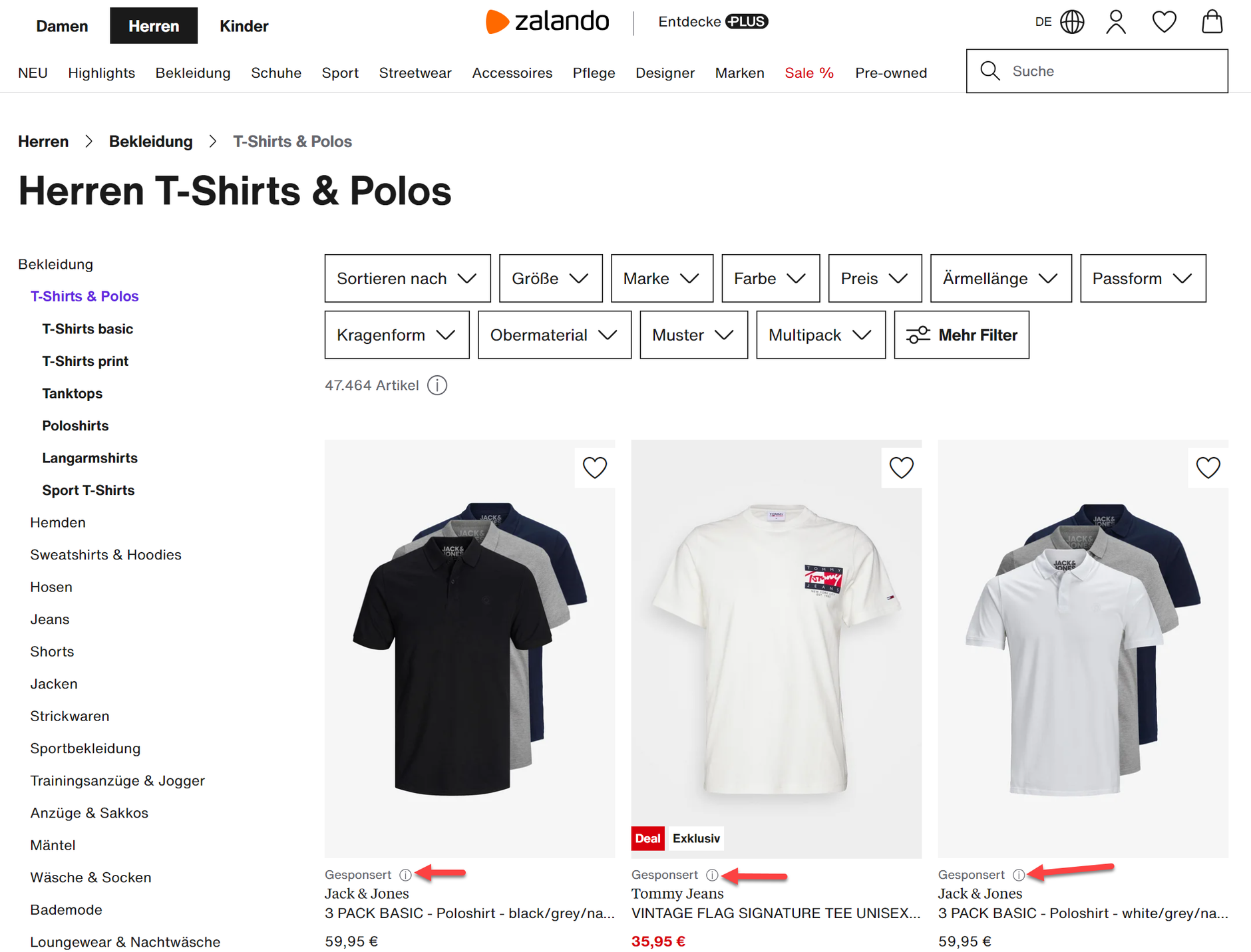
A significant advantage of Sponsored Products is the ability to target ads based on relevant keywords or product categories. By leveraging first-party data from retail platforms, advertisers can precisely reach their target audience and align ads with users' interests and search behavior. This leads to high ad relevance and increases the likelihood of conversion.
Sponsored Products are usually billed on a cost-per-click (CPC) basis, where advertisers only pay when a user clicks on the ad. The CPC amount is typically determined through an auction process where advertisers bid for ad placements. Besides the bid, factors such as product relevance and ad quality also influence ad placement.
For more information on Amazon Sponsored Products, visit our article on Amazon Sponsored Products.
Display Ads
Display ads appear on product detail pages, search results, or the homepage of online shops and can be displayed in various formats such as banners, sliders, or video ads. Display ads are particularly suitable for increasing brand awareness and presenting new products or special offers.
A major advantage of display ads is their potential for high reach within the target audience. Through prominent placement in the online shop, advertisers can effectively draw potential customers' attention to their products. Additionally, by leveraging the retailer's first-party data, display ads can be precisely targeted to users' interests and purchasing behavior.
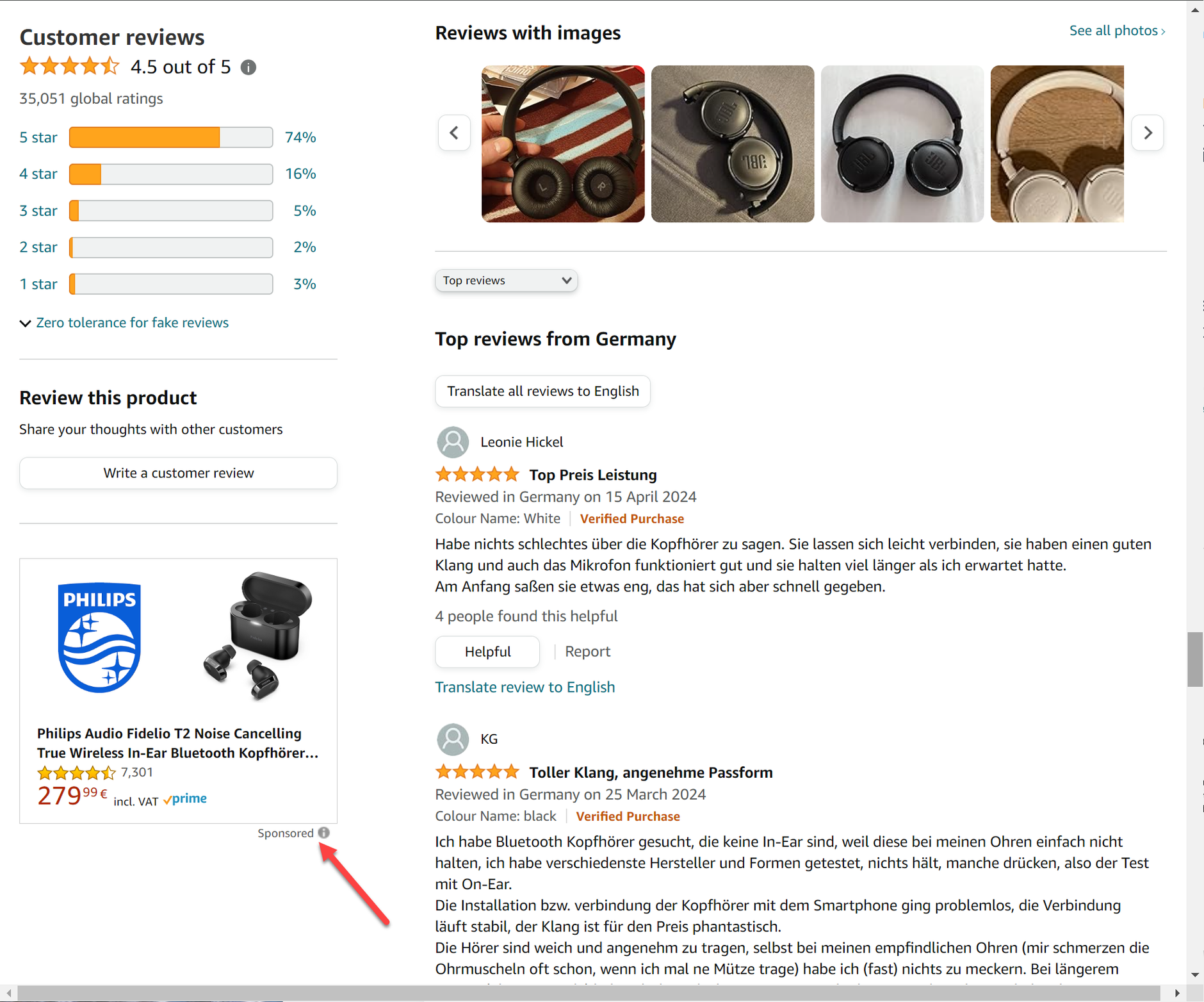
Many retailers also offer the option to personalize ads based on demographic characteristics, interests, or users' past purchase behavior. By incorporating retargeting mechanisms, advertisers can re-engage users who have already shown interest in their products, thus increasing the likelihood of conversion.
Amazon DSP is the most well-known example of retail media display campaigns.
Measurement of display ads' success is based on KPIs such as impressions or cost-per-mille (CPM). It is essential to consider not only direct sales but also the impact of ads on brand awareness and customer behavior throughout the entire marketing funnel.
Special Placements / Display Sponsorship
Traditional display sponsorship is a classic advertising format in retail media, where advertisers book prominent placements on retailers' websites or apps. This form of advertising allows brands to present their products or services in a context relevant to the customer. By placing banners, billboards, or skyscrapers, advertisers can attract potential customers' attention and drive traffic to their product detail pages or brand shops.
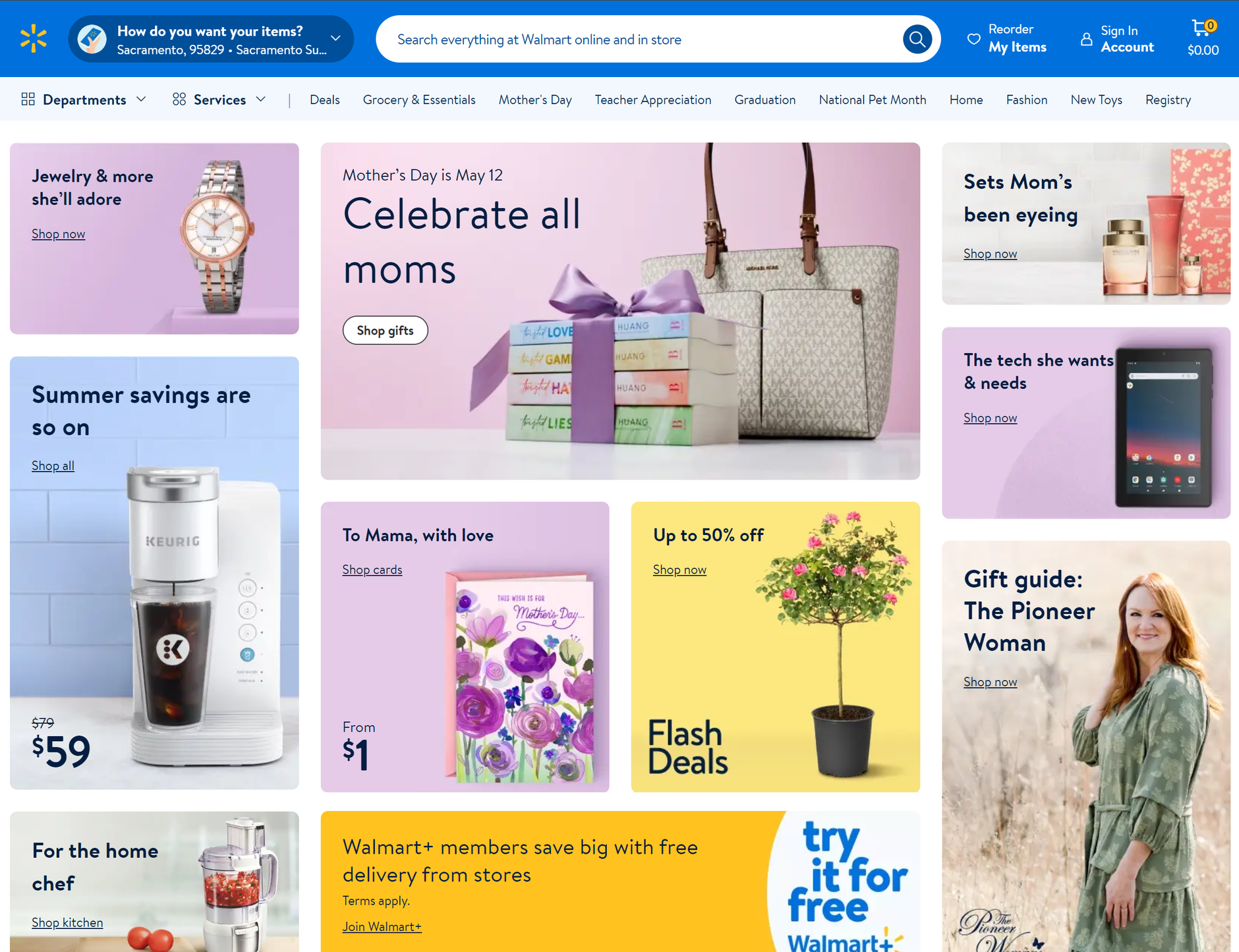
A significant advantage of traditional display sponsorship is that advertisers benefit from the high reach and trust customers place in retailers. By integrating ad materials into the retailer's look and feel, ads appear less intrusive and seamlessly integrate into the shopping experience. Moreover, this advertising format offers the opportunity to visually convey brand and product messages, thus strengthening brand recall.
Target Audiences and Suitable Industries
Retail media is suitable for a variety of industries if their products are distributed on e-commerce platforms. Whether it's consumer goods, electronics, fashion, cosmetics, or even groceries - the crucial factor is that the products are available online and can thus be promoted on digital marketplaces.
The flexibility of retail media allows companies of various sizes and orientations to address their target audiences directly at the point of purchase. Whether it's established brands looking to strengthen their market position or emerging brands seeking to increase awareness - retail media offers suitable solutions.
Another advantage of retail media is the ability to effectively promote niche products. Thanks to precise targeting options, even products with specific target groups or lower search volumes can be successfully marketed. This particularly benefits small and medium-sized enterprises, offering them new opportunities to present their products to a relevant audience and compete against larger competitors.
Retail media is particularly suitable for products with higher price points, as customers tend to conduct more research on these items and engage more deeply with product details before making a purchase decision. The proximity to the point of purchase and the ability to provide potential buyers with relevant information make retail media an effective tool for manufacturers of high-quality products.
Targeting Options and Personalization
First-party data, directly sourced from users and buyers, enables precise audience targeting and ad personalization. By analyzing purchasing and usage behavior, advertisers can tailor their messages to the interests and needs of consumers.
Retail platforms possess a wealth of data that can be utilized for targeting, including:
- Purchase history and product preferences
- Search behavior and interests
- Demographic information
- Device usage and shopping habits
By combining this data, advertisers can create a comprehensive picture of their target audience and optimize their campaigns accordingly.
Keyword Targeting, Category Targeting, Retargeting & More
Retail media offers advertisers diverse options to precisely target their audience. Keyword targeting allows ads to be served based on search terms entered by users on the platform, promoting products when potential customers are actively searching for them. Complementarily, category targeting aligns ads with specific product categories, placing them in relevant sections of the platform to reach users in early stages of the buying process.
Another powerful tool within retail media is retargeting, where users who previously interacted with products or brands are re-engaged with relevant ads. This may occur when a customer viewed but did not purchase a product or has purchased similar products in the past.
The combination of these targeting options enables advertisers to deliver messages throughout the entire customer journey, enhancing campaign effectiveness. By integrating keyword, category, and retargeting approaches, users can be targeted at various stages of the purchasing process, gradually leading to conversion.
To fully leverage the potential of these targeting options, careful planning and campaign optimization are required. Key steps include:
- Identifying relevant keywords and categories
- Developing suitable ad formats and content
- Determining appropriate retargeting timeframes and frequencies
- Continuous monitoring and adjustment of campaigns based on performance data
Personalization Based on Purchase and Usage Behavior
Retail media offers advertisers the ability to personalize their ads based on individual purchase and usage behavior of customers. By analyzing data collected by retail platforms, advertisers can gain a detailed understanding of customers' preferences, interests, and purchasing behavior. These insights allow ads to be tailored to the needs and desires of specific customer groups.
Personalization based on purchase and usage behavior includes various approaches:
- Product recommendations: Customers receive recommendations for products based on their past purchases, viewed items, or products frequently bought together.
- Personalized ad messages: Advertisers can adapt their ad texts and content to the specific interests and needs of customers to achieve higher relevance and engagement.
- Dynamic pricing: Based on customers' purchase behavior and price sensitivity, advertisers can use dynamic pricing or personalized offers in their ads.
By personalizing ads based on purchase and usage behavior, advertisers can achieve higher relevance and effectiveness of their campaigns. By presenting customers with products and content that are of interest to them, they increase the likelihood of clicks, conversions, and ultimately, purchases. Additionally, personalization enhances the shopping experience for customers, as they are confronted with ads that match their needs and provide value.
Relevant Metrics / Key Performance Indicators (KPIs)
To measure and optimize the success of retail media campaigns, it is essential to monitor the right Key Performance Indicators (KPIs). These metrics provide insights into how effective advertising spending is and whether the set goals are being achieved. Below are the key KPIs that play a crucial role in evaluating retail media campaigns.
Return on Advertising Spend
The Return on Advertising Spend (RoAS) indicates how much revenue was generated per euro invested in advertising. The formula for calculating RoAS is: RoAS = Revenue / Advertising Expenditure. For example, a RoAS of 5:1 means that for every euro spent on advertising, 5 euros in revenue were generated. The higher the RoAS, the more effective and profitable the advertising campaigns are.
However, it is essential to note that RoAS alone is not sufficient to comprehensively evaluate the success of retail media campaigns. Other metrics such as New-to-Brand Purchases should also be considered to obtain a holistic view. Additionally, RoAS should always be viewed in the context of the campaign goals. While some campaigns may prioritize achieving a high RoAS, others may prioritize goals such as increasing brand awareness or acquiring new customers.
New-to-Brand Purchases
New-to-Brand Purchases measure the number of new customers acquired for a brand. This indicator shows the proportion of purchases made by customers who have not previously purchased products from the brand within a specific period (e.g., 12 months). The higher the share of New-to-Brand Purchases, the more successful the campaign is in attracting new customers and expanding the brand's customer base.
While other KPIs such as RoAS or CPC measure the efficiency and profitability of a campaign, New-to-Brand Purchases indicate the extent to which a campaign contributes to acquiring new customers and increasing brand awareness. For brands looking to drive growth and increase market share, this indicator is particularly important.
Cost-per-Click (CPC)
Cost-per-Click (CPC) and Click-Through Rate (CTR) are two important metrics in retail media that are closely related. The CPC indicates how much an advertiser pays on average for each click on their ad. This metric is particularly relevant as it is directly related to advertising costs and thus has a significant impact on Return on Advertising Spend (RoAS). A low CPC is desirable as it means that the advertiser can potentially achieve more clicks and therefore more conversions for the same budget.
Click-Through Rate (CTR)
The Click-Through Rate is the percentage of users who click on an ad relative to the total number of users who were shown the ad. A high CTR indicates that the ad is relevant and engaging for the target audience. It also influences CPC, as ads with a higher CTR typically receive a better Quality Score, which in turn can lead to better placement and a lower CPC.
Detail Page Views
Detail Page Views (DPV) and Detail Page View Rate (DPVR) are two important metrics in retail media that provide insights into user engagement on product detail pages. DPV measures the number of views of a specific product detail page, while DPVR indicates the percentage of users who, after clicking on an ad, actually visit the product detail page.
A high DPV value indicates that the ad effectively directs users' attention to the promoted product. A high DPVR signals that the ad is relevant and engaging, as a large proportion of users who click on the ad also visit the product detail page. By analyzing these metrics, advertisers can:
- Evaluate the quality and relevance of their ads
- Optimize the placement and targeting of their campaigns
- Identify products that generate particular interest among users.
Challenges and Risks
Despite the promising opportunities that Retail Media offers, there are some challenges and potential pitfalls that advertisers should consider.
Overemphasis on RoAS and Brand Targeting
An overemphasis on Return on Advertising Spend (RoAS) and Brand Targeting can lead to a limited perspective in Retail Media campaigns. While these metrics are essential indicators of campaign success, advertisers should also consider other factors to be successful in the long term.
While RoAS provides insights into how effectively advertising budgets are converted into revenue, it does not consider customer retention or Customer Lifetime Value. A campaign with a high RoAS may be successful in the short term, but if it mainly targets existing customers and fails to attract new ones, it may affect long-term growth.
Similarly, with Brand Targeting, while increasing brand awareness and preference is important, advertisers should also consider campaigns aimed at acquiring new customers and targeting customers in different phases of the customer journey. A balanced approach that includes both Brand Targeting and performance marketing can help achieve short- and long-term goals.
Cannibalization of Organic Sales
One of the significant challenges in Retail Media is that advertisers may not generate incremental revenue. This means that the sales generated through Retail Media would have occurred even without advertising efforts. In such cases, brands may be paying for purchases that would have happened anyway, leading to a waste of advertising budgets.
One reason for this is that Retail Media often relies on Keyword Targeting, where ads are displayed for products that customers are already actively searching for. For example, if a customer searches for "Sennheiser headphones" and clicks on a sponsored ad, there is a high likelihood that they would have purchased the product even without the ad. In this case, the advertisement does not generate additional revenue for the brand.
Therefore, it is essential to measure the incrementality of campaigns by conducting tests where a portion of the target audience does not see ads. By comparing sales between the test and control groups, it can be determined what proportion of sales can actually be attributed to advertising efforts.
However, completely foregoing advertising on one's brand runs the risk of competitors advertising on the brand. It's a classic prisoner's dilemma.
Continuous Monitoring and Optimization
Continuous monitoring of Retail Media campaigns is crucial to ensuring their effectiveness and being able to respond to changes promptly. Only by regularly monitoring Key Performance Indicators (KPIs) such as Return on Advertising Spend (RoAS), Click-Through Rate (CTR), and Cost-per-Click (CPC) can advertisers determine if their campaigns are achieving the desired results. It is essential not only to monitor absolute numbers but also to analyze trends and developments over an extended period.
Another reason for continuous monitoring is the ability to respond quickly to changes in the competitive environment or customer behavior. For example, if a competitor adjusts their advertising strategy or introduces new products to the market, this can impact the performance of one's own campaigns. Through close monitoring, such changes can be detected early, and appropriate measures can be taken to maintain or even improve the effectiveness of the campaigns.
Furthermore, continuous monitoring allows for ongoing optimization of campaigns. Based on insights gained, advertisers can adjust their targeting settings, ad texts, or bids to achieve better results. The selection of the right products for promotion can also be improved through careful analysis of campaign data. It is essential not only to focus on short-term successes but also to consider the long-term effects on brand awareness and customer retention.
To ensure effective monitoring, advertisers should:
- Define clear goals and KPIs for their campaigns
- Use appropriate tools and systems for data collection and analysis
- Create and analyze regular reports (daily, weekly, monthly)
- Make timely adjustments to campaigns based on insights
- Keep an eye on long-term trends and developments
Conclusion
Retail Media has become an indispensable part of a modern media mix. The unique advantages of this advertising form, such as proximity to the point of purchase and the use of valuable shopper data, offer advertisers new opportunities to effectively reach their target audiences.


